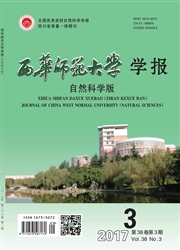

 中文摘要:
中文摘要:
采集了四川马尔康地区3种真菌,根据其形态学特征结合卯晓岚的《中国大型真菌》图谱,初步确定其疑似为黄菇、松乳菇、红菇3个种。为提高鉴定的准确性,通过构建基因池;用特异性引物进行PCR扩增,并对扩增产物进行测序;将测得的实验样品的序列在Gene Bank中进行BLAST比对;并与相似性较高的已知的种,利用DNAMAN、Clustalx1.83和MEGA5.0软件采用N-J法构建进化树,探寻他们与已知物种的相关关系。结果表明,三种疑似菌株扩增出的目的条带为500—750bp,J1、J2、J3号菌株分别与臭黄菇、松乳菇、红菇的序列相似度最高。并利用序列的相似性做出了它们各自的进化树。最终得出结论:J1号菌株为臭黄菇(Russula foetens),J2号菌株为松乳菇(Lactarius deliciosus),J3号菌株为红菇(Russula.)。利用r DNA-ITS序列分析法和形态学分类法相结合的方法鉴定菌种,不仅丰富了三种真菌的基因库,而且也克服了单纯的r DNA-ITS序列分析法因受基因库的完善程度、高度相似性序列的多少以及具体物种ITS区的可变程度等限制而不能鉴定出所有真菌的缺点,提高了真菌分类鉴定中一些模糊性状的区分度。
 英文摘要:
英文摘要:
In this paper, the ITS sequence diversity analysis of the large fungal fruiting body,combined with the tra-ditional morphological identification method, was applied to the identification of large fungi. We collected three kinds of fungi in Sichuan Barkam region and initially identified that they were the suspected Russula foetens , Lactarius deliciosus and Russula species, according to its morphological characteristics with the " China macrofungi" map written by Mao Xiaolan. To improve the identification accuracy, we constructed gene pool; PCR was amplified by specific primers,and the amplified products were sequenced. The sequence of the measured samples was compared by using BLAST in Gene Bank , and found the known species with high homology, and the N-J method was used to construct the phylogenetic tree with DNAMAN , Clustalxl. 83 and MEGA 5.0 software to explore their correlation with the known species. The results showed that amplified purpose bands of three suspected strains were 500- 750bp , J1 , J2 and J3 strains’ sequence respectively had a high similarity with Russula foe tens, Lactarius deliciosus and Russula, and m a de their respective phylogenetic tree by the use of sequence similarity. Finally, the conclusion was that the strain J1 was Russula fo e ten s, the J2 strain was Lactarius deliciosus , and the J3 strain was Russula. The method of species identification which combined the rDNA - I T S sequence analysis with morphological classification, not only enriched the gene pool of three fungal species,but also overcame the shortcomings of the only one r DNA - ITS sequence analysis method that could not identify out all fungi because of the limit,like the improvement degree of gene pool,number of highly homologous sequences and specific species of rDNA - ITS region of variable degree and improved the division of some fuzzy traits in fungi. So the method of identifying strains combined the traditional classification method with the analysis of r DNA
 同期刊论文项目
同期刊论文项目
 同项目期刊论文
同项目期刊论文
 Morphological and genetic characterization and optimization of fermentation conditions of Xiaojin Tr
Morphological and genetic characterization and optimization of fermentation conditions of Xiaojin Tr 期刊信息
期刊信息
